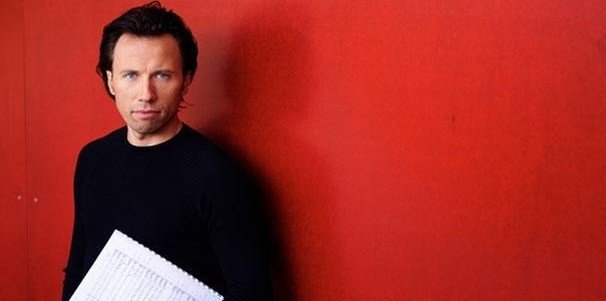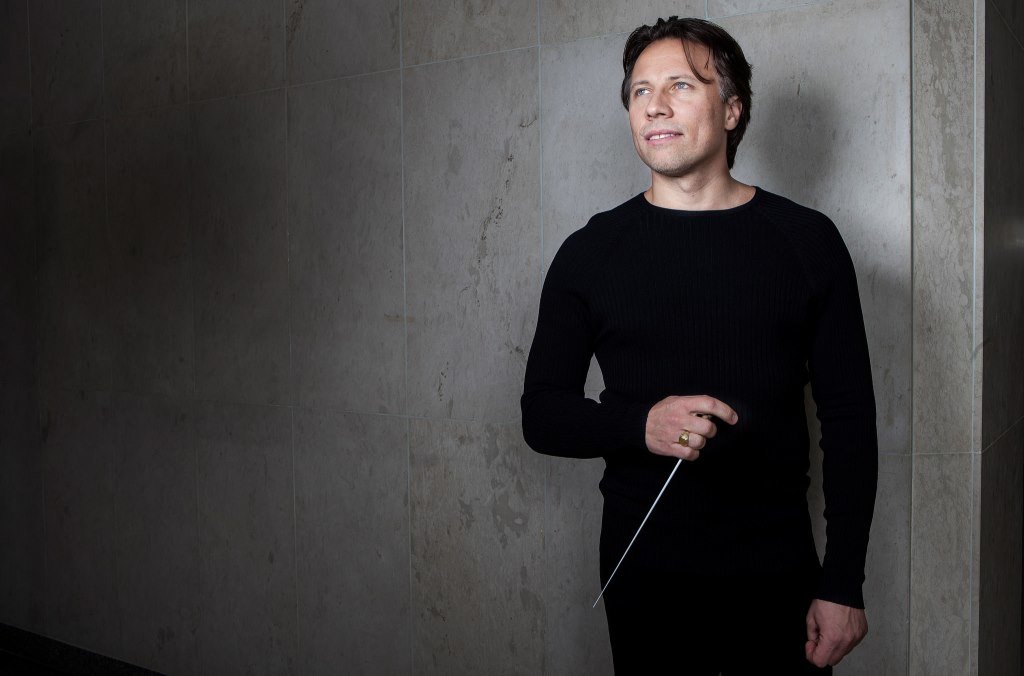Kristjan Järvi made his debut with the Berliner Philharmoniker in a performance teaming with the inexhaustible energy for which the youngest son of Neeme Järvi is renowned. In an age where conductors often approach music with an overly academic ethos, one which would restrict the aural size and metaphysical scope of the music, Kristjan Järvi has remained committed to pushing boundaries and expanding horizons.
The reductive approach to musical performance is no more apparent than in contemporary performances of Beethoven. In spite of this worrying trend, Järvi has gone against the grain and recently recorded Mahler’s revolutionary re-orchestration of Beethoven’s 9th symphony with the Tonkünstler Orchestra. It is one of only three commercially available recordings of Mahler’s re-working of Beethoven’s 9th.
Living in an era when orchestral conductors appear to increasingly specialise in one or two specific genres of music, it is refreshing that Kristjan Järvi is equally comfortable conducting in the high classical tradition, as he is in the romantic tradition. His recordings of modern music are likewise highly compelling, and are frequently lauded as such. His 2010 recording of Pärt’s 3rd symphony is universally regarded as the definitive version of Pärt’s most well-known symphony.
Järvi’s debut in front of what is quite possibly the world’s finest orchestra, was long over-due, especially since his brother and father have led the Berliners on many occasions. The Berliner Philharmoniker are indeed an orchestra whose sound is instantly recognisable. Whilst the sound has evolved over the decades, it is the rich, heavy, lush yet aggressive sound developed by Herbert von Karajan that has remained with the orchestra ever since the death of their longest serving director in 1989. Standing before such a band for the first time might well be an intimidating experience for a young maestro, but for Järvi this did not seem to be the case. He appeared entirely in his element, commanding the podium with his overtly expressive and at times dance like gesticulations.
The centrepiece of the concert was Tchaikovsky’s 4th symphony, one of the most important pieces in the symphonic repertoire. Whilst the 4th is a widely performed piece of music, it is all too easy for a conductor to take the majesty of such a piece for granted.
A conductor ill at ease with Tchaikovsky’s compositions may will sit back and allow the deeply involved melodies to act as a substitute for a more individuated voicing of the piece. It is crucial however to remember that whilst Tchaikovsky is rightly remembered as one of orchestral music’s most able melodists, Tchaikovsky was also a master at transforming complex harmonies into lucid aural narratives. He was also far more adventurous with rhythmic syncopation and a far more innovative orchestral arranger than he is often given credit for.
These more subtle elements of Tchaikovsky’s genius became instantly apparent from the opening horn fanfare of the first movement. Järvi was not content to suck the rhythmic and dramatic life out of the symphony by allowing the melodies to float lugubriously over metronomic tempi. His heavy emphasis on tempo rubato and dramatic dynamic surges place him in the proudest tradition of Tchaikovsky performance alongside the great masters of the 20th century; the titans Svetlanov and Mravinsky in particular. In many ways, Järvi ‘s combination of comfort and ability to take creative risks with music speaks to a broader phenomenon within the Estonian classical tradition.
Estonia’s classical music culture has remained unique amongst the great European traditions of classical music. Since the middle of the 19th century, virtually all important orchestral music has sprung either from the Austro-Germanic tradition or the artistically polar Russian tradition. Smaller, but significant central European traditions of orchestral music such as the Czech, Hungarian or Polish traditions have always been more stylistically related to Vienna than to either St. Petersburg or Moscow. Inversely, the music of the Caucuses and Balkans has always been more implicitly related to the Russian tradition than that of the Austro-Germanic tradition.
Estonian performance and composition is not so easy to place. It is something rather apart from both behemoth traditions, this in spite of the majority of Estonian musicians during the 20th century receiving their training in either Leningrad or Moscow. Because of this however, Estonian classical performers like the Järvis have been embraced by audiences from both of these grand traditions and indeed in the wider world. Instances of tension between traditions witnessed in Svetlanov’s punchy, rhythmically explosive Bruckner, so alien to the Germanic ear or Karajan’s steady and heavily legato laden approach to Rimsky-Korsokov so alien to the Russian ear, represent stylistic tensions that mostly bypass Estonian musicians who exist in a sphere outside the tacit dogmas of the two larger traditions.
This is why the two smaller pieces from Kristjan Järvi’s performance in Berlin did not feel as though they were merely incidental to Tchaikovsky’s grand 4th. Carl Neilson’s En Fantasirejse til Færøerne was played with a kind of intensity that made the piece by the post-romantic composer spring to life in a highly refreshing way, and likewise – Järvi’s deeply meditative, yet never undramatic reading of Olivier Messiaen’s L’Ascension demonstrated that it is indeed possible to place a deeply impressionistic piece in a mostly romantic programme without doing so by exploiting the resonant pathos of the larger romantic piece.
The response of the deeply critical audience in the Philharmonie to Järvi’s performance was highly reassuring. Järvi received resounding applause from the Berlin audience, not least after the heroic coda of the final movement of Tchaikovsky’s 4th symphony.
One can only hope that Kristjan Järvi will be making many more appearances in Berlin over the coming years. Indeed, as the Berliner Philharmoniker have not had a German or Austrian director since 1996, the possibility of an Estonian director of the most forward looking orchestra in Europe is more promising than one could have imagined just 20 years ago. Until then, Estonia and the wider classical world will await the next appearance by the youngest and perhaps most energetic of the Järvi’s before one of the world’s top music ensembles.
I
Cover: Kristjan Järvi (photos courtesy of Pictures.com and Kristjan Järvi).



Very good article, thanks